The table below provides basic information about the float, including primary sensors, mission parameters and current status of profiles.
| Institute | CSIRO |
| Principal Investigator | Susan Wijffels |
| Pressure Sensor | Druck (serial number=10451) |
| CTD Sensor | APEX-SBE-41 (serial number=2925) |
| CTD Sampling Mode | Burst Sampler |
| Controller Board | APF 8 |
| Additional Sensors/Software | None |
| Park Depth | 1000 m |
| Profile Depth | 2000 m |
| Launch Date | 07-05-2007 |
| Number of D-moded Profiles | 41 |
| Calibration Date | 01-03-2009 |
| Pressure Drift | Surface Pressure Offset corrected |
| Salinity Drift | No salinity drift detected |
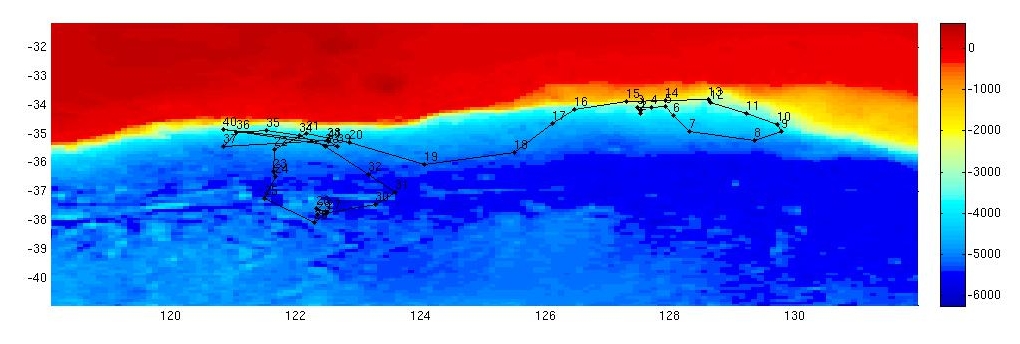
This float was deployed in the G.A.B., Southern Ocean, and has drifted in a region bounded by 120 to 130 ºE and 33 to 38 ºS.
The surface pressure for this float is shown in the plot below.
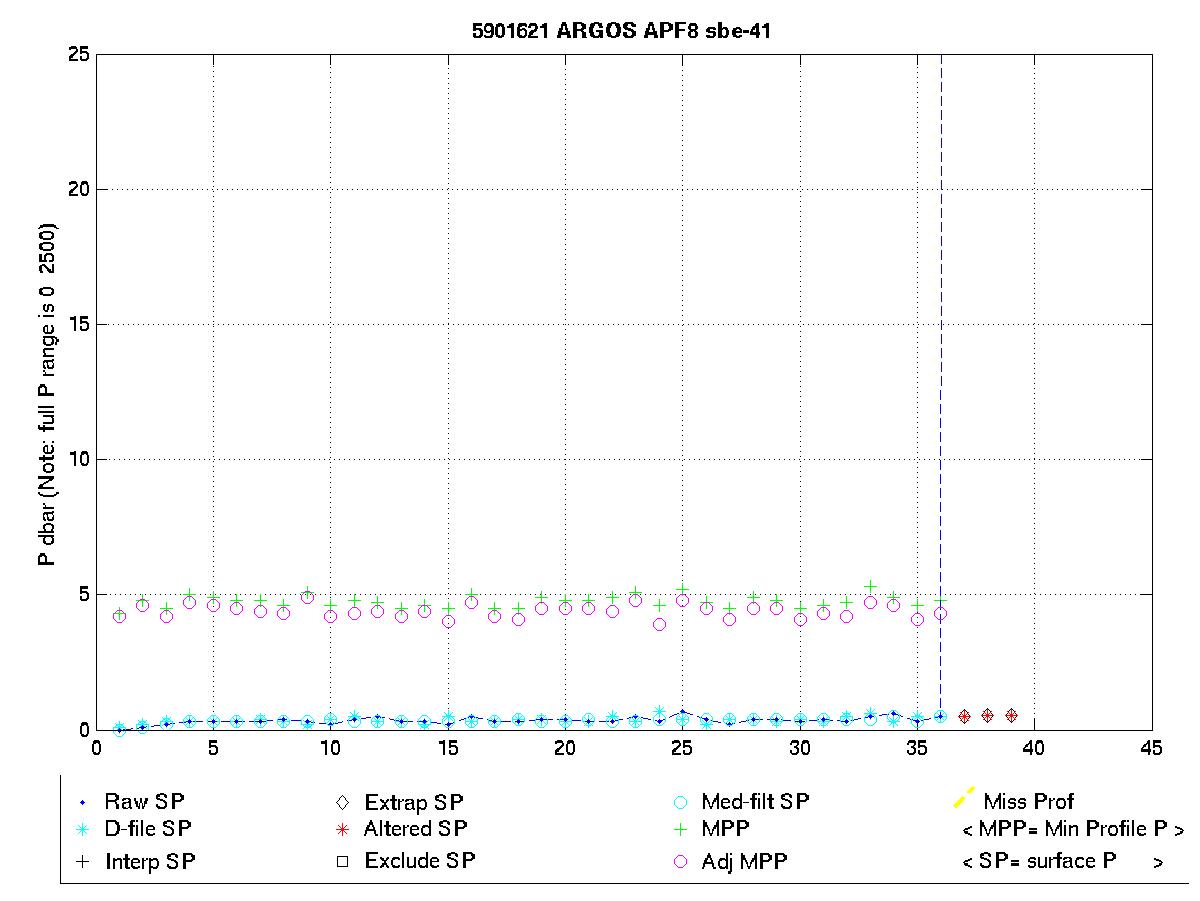
Potential Temperature-Salinity (a), Location (b, Max Temperature (c) and Sea Surface Salinity (d) plots located below.
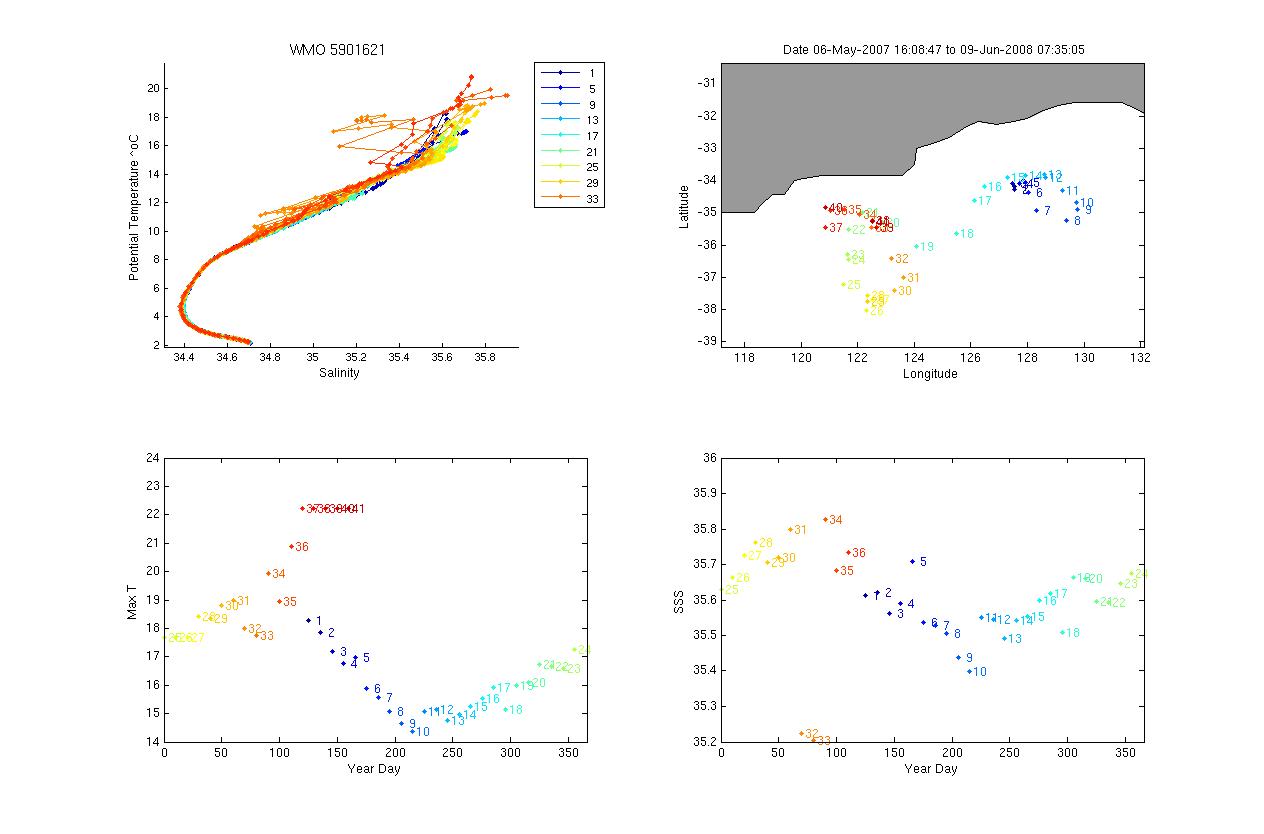
Surface temperatures generally varied between 14 and 22.5 ºC and surface salinities from 35.2 to 35.85.
The plot below shows the potential-temperature/salinity relationship for the deepest theta levels where the relationship between the two parameters should show the least variation.
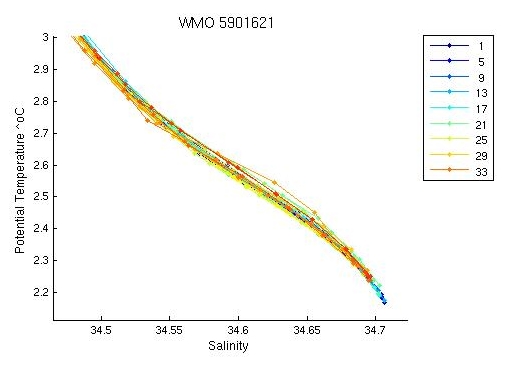
The profiles are reasonably distributed, there is very little variation in salinity at depth.
The two plots below show a). the location of this float (black circles) in relation to the position of other nearby argo floats (coloured circles) and b). The potential-temperature/salinity curve for this float (in black) compared to nearby argo floats (coloured).
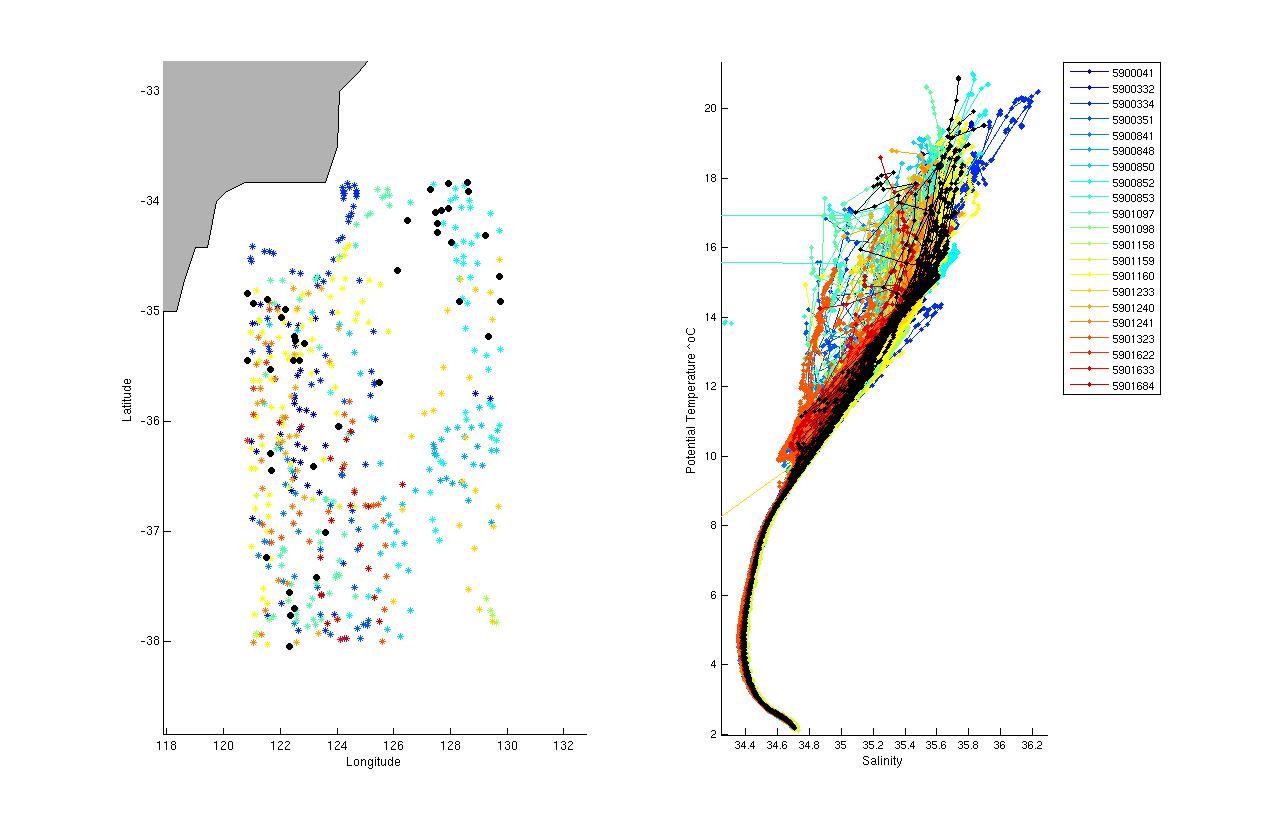
The potential-temperature/salinity relation for the deepest theta levels for this float (in black) and nearby argo floats (coloured) is displayed below.
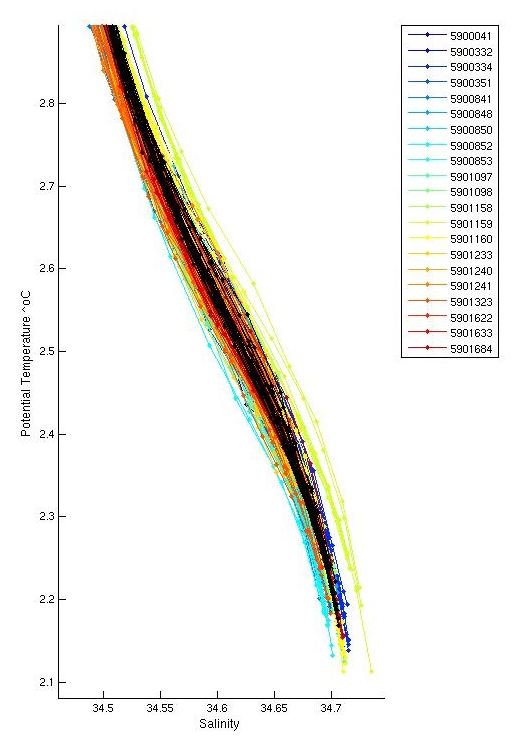
The profiles are well distributed compared to neighbouring floats. The deep profiles are in the middle of the envelope.
There were inversions in profiles 1 (thermal lag spike, not significant), 2 (thermal lag spike, not significant) and 9 ((thermal lag spike, not significant).
Salt hooks were located in profiles; 2, 3, 5, 7, 9, 11, 16, 17, 19, 21, 24, 26, 28, 30, 32, 35 and 36. These were flagged as QC 4 for both T & S.
The float grounded on profiles 14 and 15. There were bad values at the bottom of these two profiles which were flagged as QC=4 for both T & S. The real time software flagged some values as bad in profiles 34, 37, 38, 39 and 40. Most of these were left in, however the value in pf 34 was changed back to QC=1 as this appeared to be good.
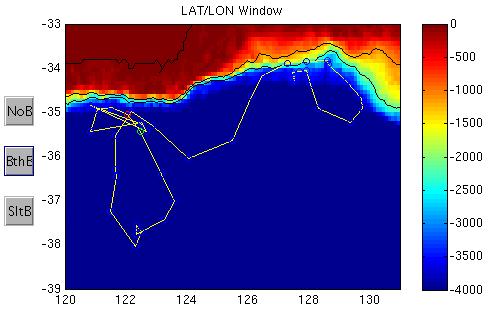
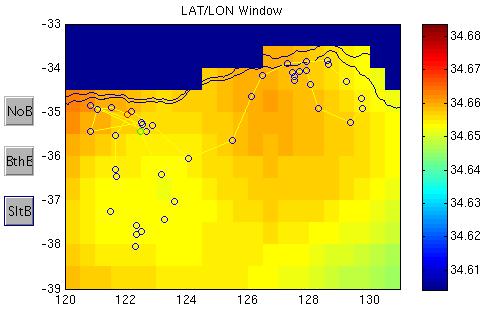
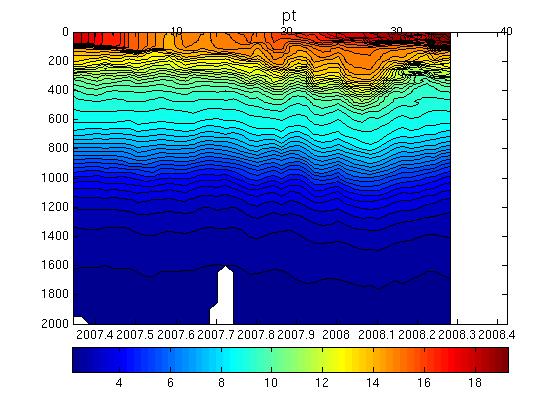
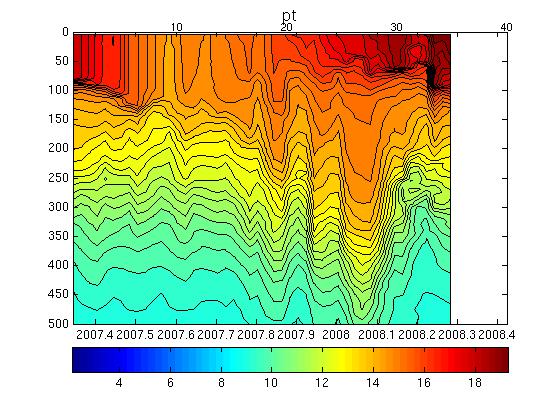
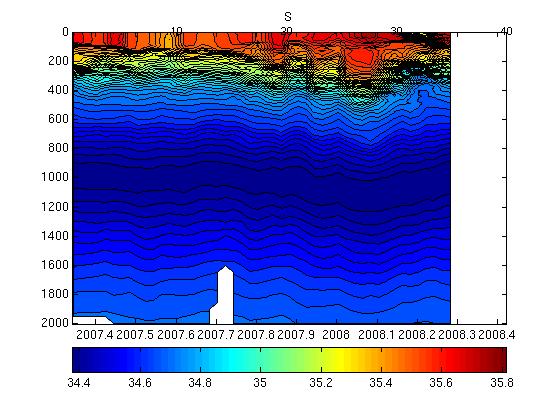
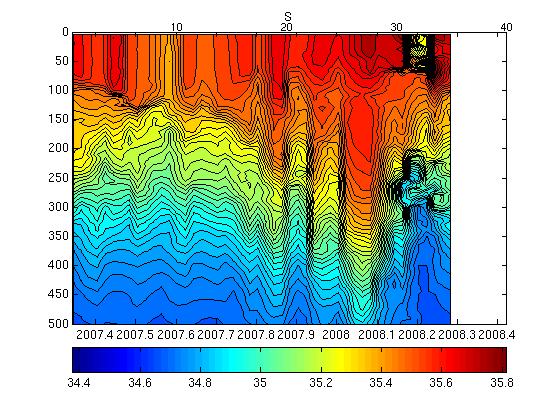
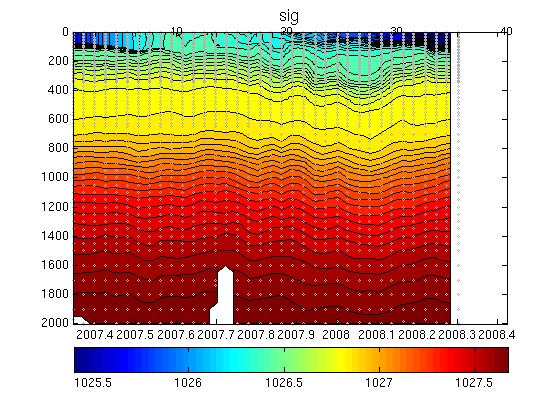
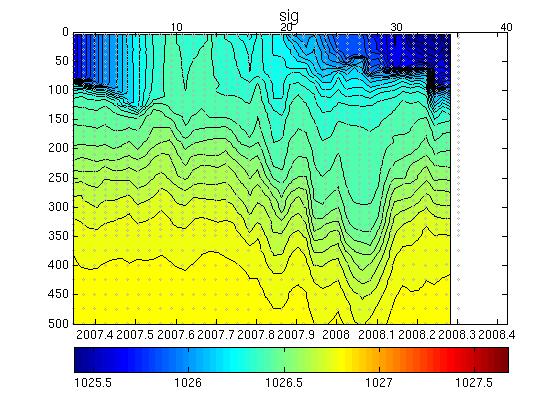
The plot below shows the analysis of salinity drift using the WJO/OW software.

This float requires no correction.
The four plots below show the salinity anomalies on theta surfaces compared to (a) the Gouretski and Kolterman climatology, (b) the CARS (CSIRO Atlas of Regional Seas)/WOA (World Ocean Atlas) climatology, (c) the anomalies within the float series itself, (i.e. the salinity anomaly of each profile from the mean profile average for the float and (d) the raw float salinity compared to the CARS and G&K climatological salinity on a deep theta surface.
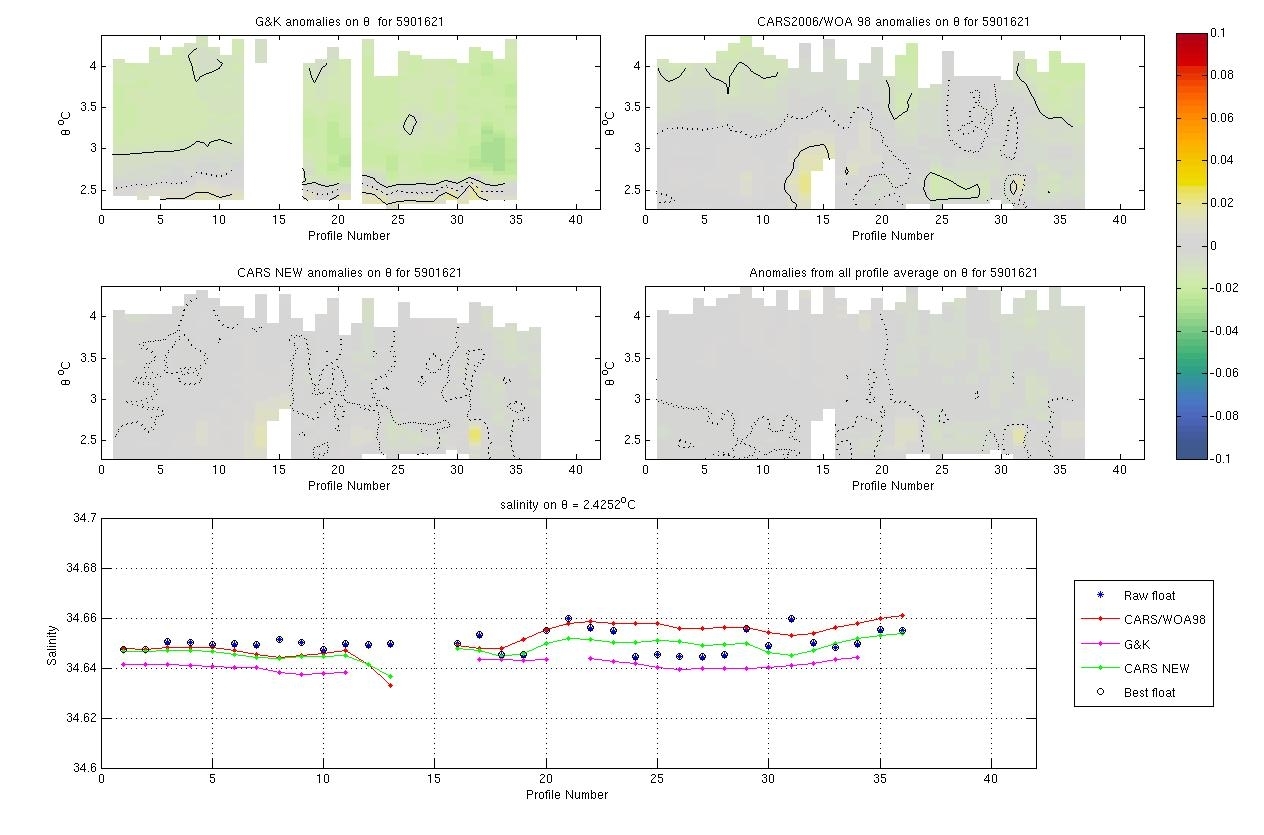
The float was highly variable (+- 0.01). It was close to CARS but salt offset from G&K by about 0.01.
The plots below show the raw float salinity data (solid blue line) compared to neighbouring argo floats (coloured symbols) on a deep potential temperature surface. The locality map shows the location of the profiles for this float and for neighbouring floats.
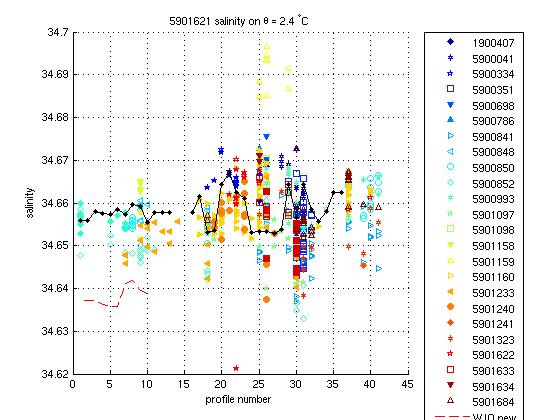
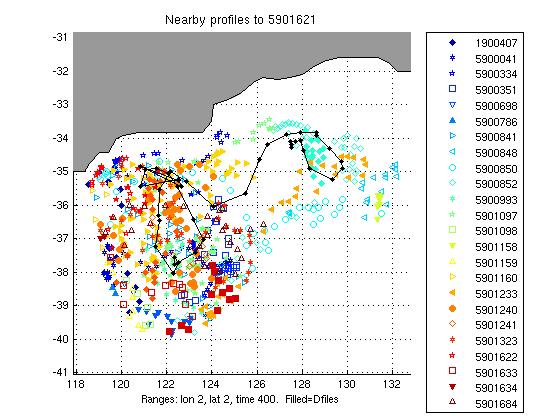
The float looks fine compared to neighbouring floats. The first part of the data series (up till profile 15) is very stable and then becomes highly variable (+- 0.01 to 0.02) where it looks like the float has crossed from one side of a front or eddy to the other multiple times.
This float required no salinity drift correction.
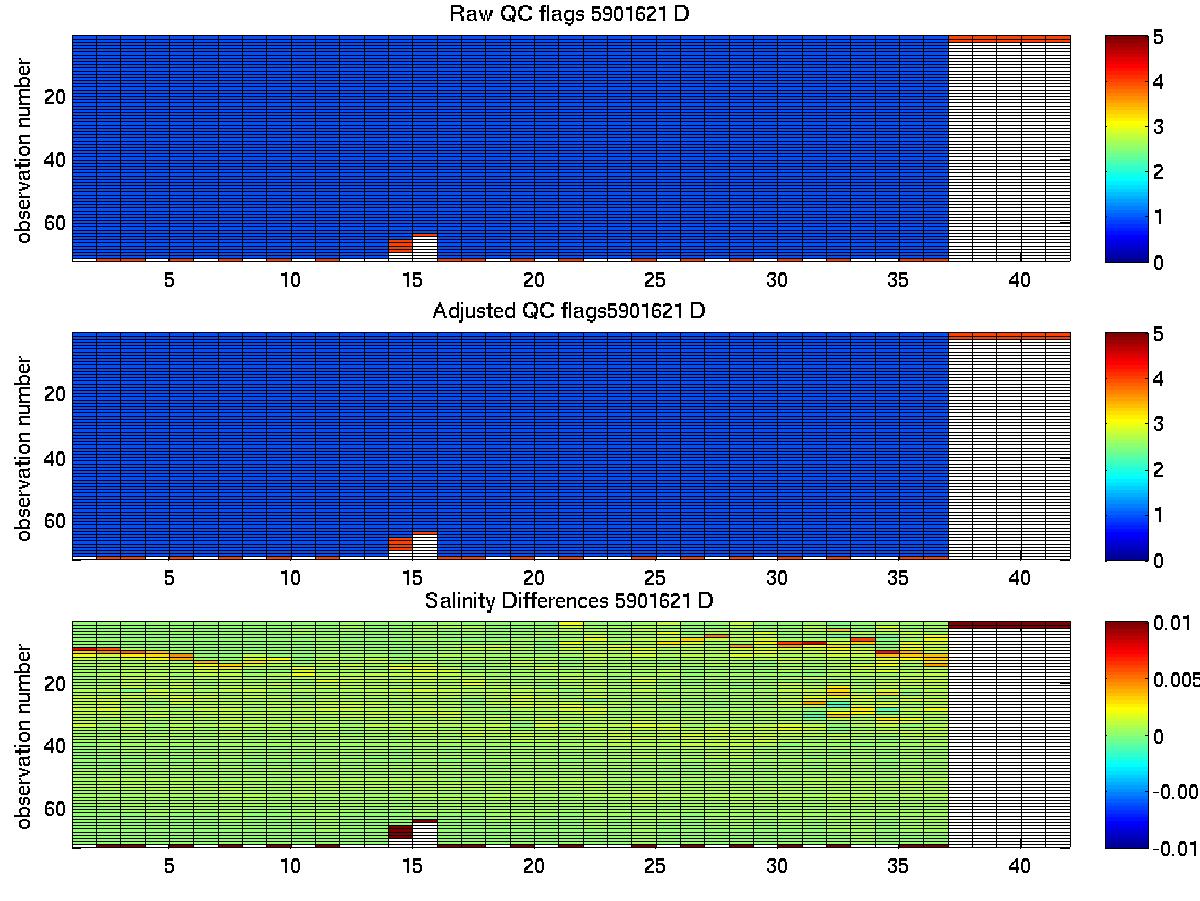
The plot below summarises the QC flags and salinity differences for the raw and adjusted salinity fields in the final delayed mode files submitted to the GDAC.
Created 14-Jan-2009